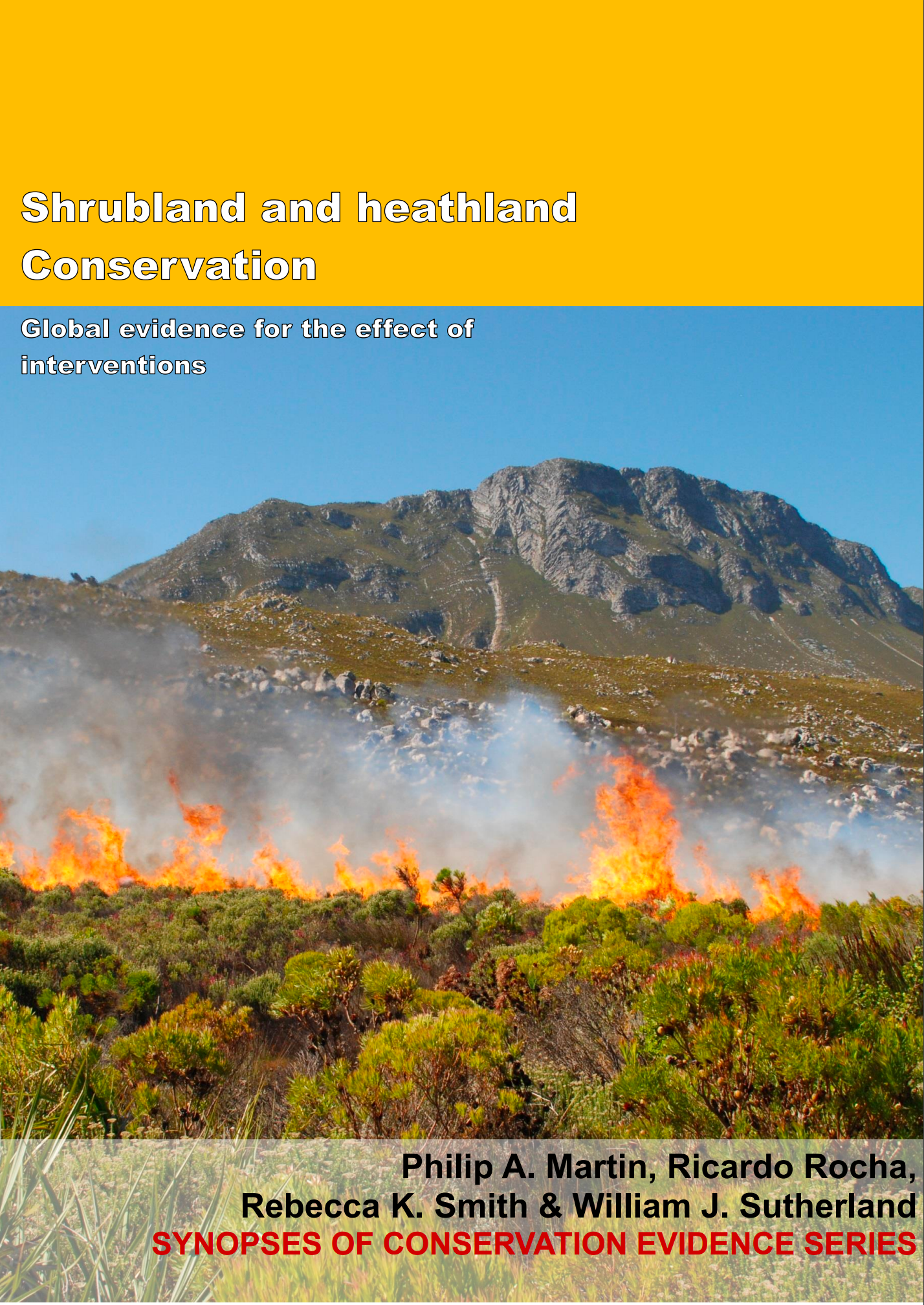Strip topsoil
-
Overall effectiveness category Unknown effectiveness (limited evidence)
-
Number of studies: 5
View assessment score
Hide assessment score
How is the evidence assessed?
-
Effectiveness
30% -
Certainty
25% -
Harms
3%
Study locations
Supporting evidence from individual studies
A controlled study in 1995–2005 in a former heathland in central England, UK (Wilton-Jones & Ausden 2005) reported that turf removal promoted an increase in heather Calluna vulgaris and reduced the dominance of wavy hair-grass Deschampsia flexuosa. After 10 years, the percentage cover of heather was higher in the area where turf had been stripped (65%) than in the unstripped area (1%). Additionally, the percentage cover of wavy-hair grass was lower in the stripped (5%) than in the unstripped area (80%) whereas the percentage cover of bracken Pteridium aquilinum did not change between stripped and unstripped areas (5%) (results are not based on statistical tests). In October/November 1995 turf was removed to a depth of approximately 10 cm from an area of about 600 m² of wavy hair-grass-dominated acid grassland using a mini-digger with a dozer attachment. Vegetation cover was visually estimated in April 2005.
Study and other actions testedA replicated, randomized, controlled study in 1994–2003 in two agricultural fields in Suffolk, UK (Walker et al. 2007) found that removal of topsoil did not increase the cover of common heather Calluna vulgaris in two of two comparisons, after nine years. In two of two comparisons cover of common heather in areas where topsoil had been stripped was not significantly different (0%) to cover in areas where it had not (0%). In 1994 the top 35–45 cm of soil were stripped in four 80 m2 plots while in four other plots soil was not stripped. In April 2003 five 2500 cm2 quadrats were placed in each plot and the cover of all plant species recorded.
Study and other actions testedA randomized, replicated, paired, controlled study in 1993–2002 in three former grassland sites in the UK (Allison & Ausden 2004) found that removal of topsoil did not alter cover of heathland species or cover of forbs, but increased cover of annual grasses and led to a decrease in perennial grasses. After nine years, cover of heathland species and forbs did not differ significantly between areas where topsoil was removed (heathland species: 1%, forbs: 11%) and areas where topsoil was not removed (heathland species: 0%, forbs: 8%). Cover of annual grasses was higher in areas where topsoil was removed (13%) than in areas where it was not removed (1%). However, the cover of perennial grasses was lower in areas where topsoil was removed (22%) than in areas where topsoil was not removed (83%). In 1993 topsoil was removed from twelve 3 x 3 m plots while in twelve other plots topsoil was not removed. The cover of plant species in each plot was estimated in July and August 2002 using a point quadrat.
Study and other actions testedA controlled, before-and-after trial in 2007–2008 in a former heathland now dominated by trees in Essex, UK (Gardiner & Vaughan 2008) found that stripping the top layers of soil increased the cover of gorse Ulex europaeus and sheep’s sorrel Rumex acetosella, as well as the number of plant species. The cover of gorse increased in plots where soil had been stripped (before: 0%; after: 2%) and this cover was higher than in plots that had not been stripped (before: 0%; after: 0%). The cover of sheep’s sorrel also increase in plots where soil had been stripped (before: 0%; after: 1%) and this was also higher than in plots where soil had not been stripped (before: 0%; after: 1%). After soil stripping, the number of plant species in stripped plots was higher than in unstripped plots (stripped plots: 1.5 species/quadrat; unstripped plots: 0.6 species/quadrat). Leaf litter and topsoil was stripped in ten 50 cm x 50 cm quadrats, while in another ten quadrats topsoil was left unstripped. Vegetation cover in the quadrats was assessed four times between May 2007 and July 2008.
Study and other actions testedA randomized, replicated, controlled study in 2009–2010 in heathland in Breckland, UK (Pedley et al. 2013) found that stripping of top soil increased the abundance of generalist plants in six out of six comparisons, the abundance of specialist plants in five out of six comparisons but only increased the species richness of specialist plants in two out of six comparisons. For generalist plants, abundance was higher in stripped (50–76) than in unstripped plots (31–40) in six out of six comparisons but species richness did not differ significantly between stripped (9–14) and unstripped plots (6–7). For specialist plants, abundance was higher in stripped (62–83) than in unstripped plots (22–27) in five out of six comparisons but species richness was only higher in stripped (11–12) than in unstripped plots (5–6) in two out of six comparisons. In nine plots soil and litter were inverted in plough lines that alternated with 30–40 cm strips of intact vegetation, in another nine plots turf and top-soil were inverted and biomass was retained and buried and in nine plots more vegetation, root mat, litter and organic soil were removed. Nine plots were left untreated. At each plot, plant species richness and abundance were recorded using twenty 1 m x 1 m quadrats between May and August of both 2009 and 2010. Species were classified as generalists if ubiquitous in forest and as generalists if likely to benefit from heathland connectivity.
Study and other actions tested
Where has this evidence come from?
List of journals searched by synopsis
All the journals searched for all synopses
This Action forms part of the Action Synopsis:
Shrubland and Heathland Conservation
Shrubland and Heathland Conservation - Published 2017
Shrubland and Heathland synopsis





)_2023.JPG)














